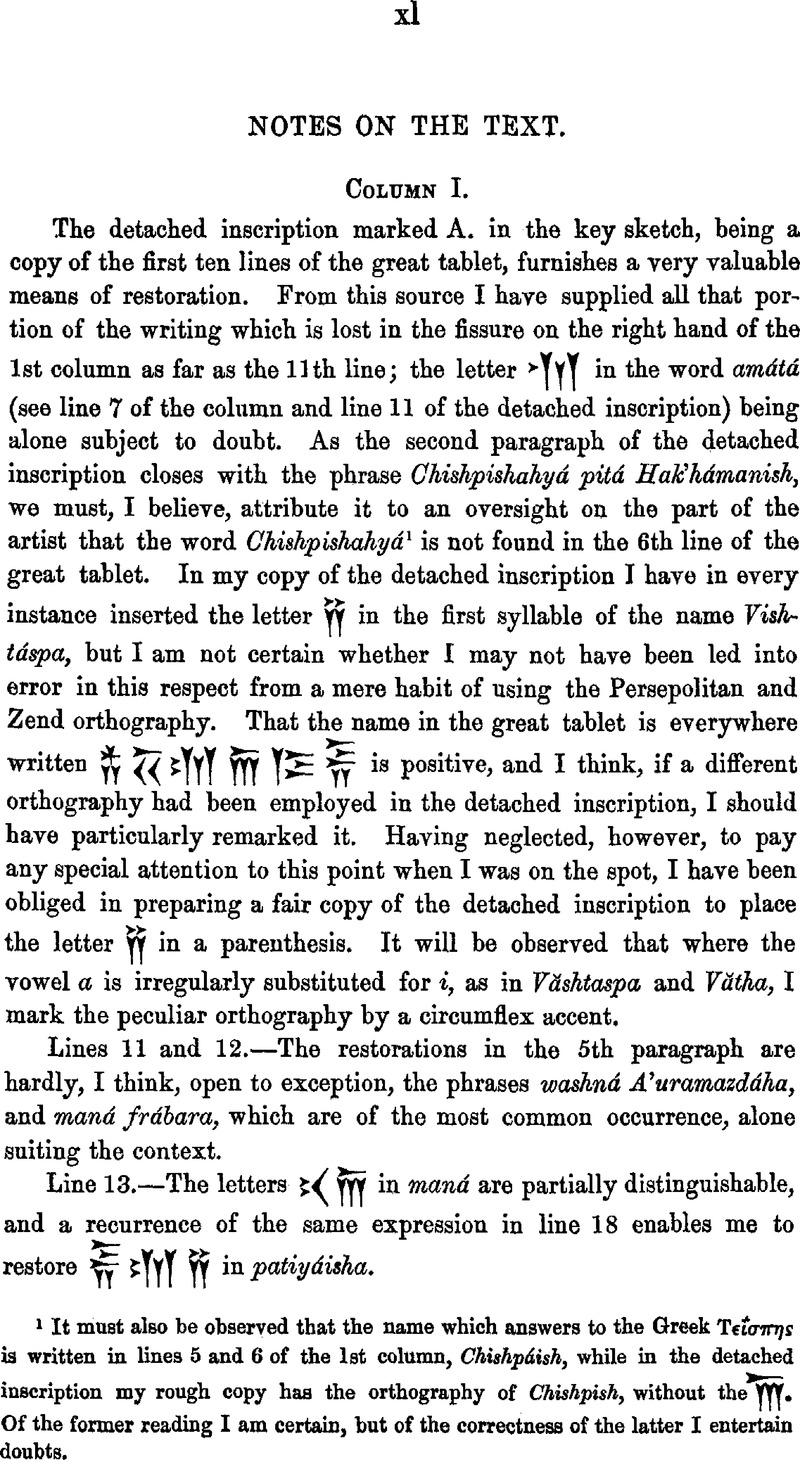No CrossRef data available.
Published online by Cambridge University Press: 14 March 2011

page xl note 1 It must also be observed that the name which answers to the is Greek ![]() is written in lines 5 and 6 of the 1st column, Chishpáish, while in the detached inscription my rough copy has the orthography of Chishpish, without the
is written in lines 5 and 6 of the 1st column, Chishpáish, while in the detached inscription my rough copy has the orthography of Chishpish, without the ![]() Of the former reading I am certain, but of the correctness of the latter I entertain doubts.
Of the former reading I am certain, but of the correctness of the latter I entertain doubts.
page xli note 1 See Lassen's, Zeitschrift, 1844, p. 178.Google Scholar Inscript. N. R., line 28. For the inscription of Nakhsh-i-Rustam, however, I uniformly consult the MS. of Mr. Westergaard, collated with an independent copy taken by Mons. Dittel at the same time.
page xli note 2 See Lassen's Zeitsehrift, loc. cit.
page xli note 3 See Lassen's, Zeitschrift, page 178.Google Scholar
page xli note 4 Westergaard and Dittel agree in the orthography.
page xlii note 1 See Lassen's, Zeitschrift, page 179.Google Scholar
page xliii note 1 I quote from Westergaard's MS. Lassen has the commencement of the inscription in his Zeitschrift, page 120.
page xlv note 1 In a copy of this paragraph, taken in 1835, I have the conjectural reading of ![]() for the commencement of the word which follows Tigrám, and I am inclined to regard that reading as more correct than the orthography of the present text. Perhaps the entire word may be viyatarayám or viyatarayám, which would give the signification of “transivi.” See line 25 of the 5th column, where the letters viyatara are quite distinct.—See more in the notes on this passage in the fourth chapter.
for the commencement of the word which follows Tigrám, and I am inclined to regard that reading as more correct than the orthography of the present text. Perhaps the entire word may be viyatarayám or viyatarayám, which would give the signification of “transivi.” See line 25 of the 5th column, where the letters viyatara are quite distinct.—See more in the notes on this passage in the fourth chapter.
page xlvi note 1 See Lassen's, Zeitschrift, page 172. I have also been obligingly favoured by Mr. Westergaard with a MS. copy of this inscription.Google Scholar